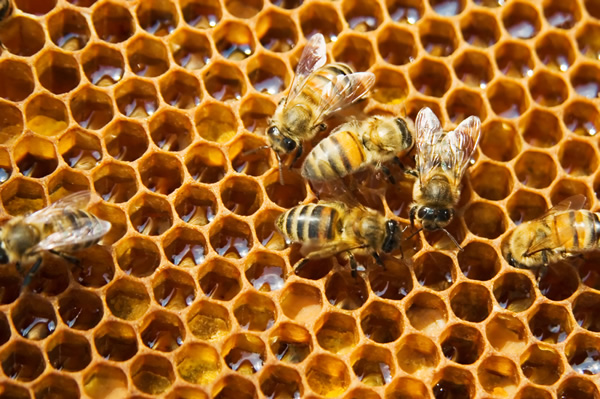
In 1999, two thousand years since Varro came up with the conjecture, University of Pittsburgh professor Thomas C. Hales came up with the mathematical proof. Robert Krulwich of NPR's Krulwich Wonders explains in plain english what it's all about (complete with cute drawings of honeybees - squee!):
For bees to assemble a honeycomb the way bees actually do it, it's simpler for each cell to be exactly the same. If the sides are all equal — "perfectly" hexagonal — every cell fits tight with every other cell. Everybody can pitch in. That way, a honeycomb is basically an easy jigsaw puzzle. All the parts fit.
OK, that explains why honeycomb cells are same-sized. But back to our first question: Why the preference for hexagons? Is there something special about a six-sided shape?
Some shapes you know right away aren't good. A honeycomb built from spheres would have little spaces between each unit ...
... creating gaps that would need extra wax for patching. So can see why a honeycomb built from spheres wouldn't be ideal. Pentagons, octagons also produce gaps. What's better?
"It is a mathematical truth," Lightman writes, "that there are only three geometrical figures with equal sides that can fit together on a flat surface without leaving gaps: equilateral triangles, squares and hexagons."
So which to choose? The triangle? The square? Or the hexagon? Which one is best? Here's where our Roman, Marcus Terentius Varro made his great contribution. His "conjecture" — and that's what it was, a mathematical guess — proposed that a structure built from hexagons is probably a wee bit more compact than a structure built from squares or triangles. A hexagonal honeycomb, he thought, would have "the smallest total perimeter." He couldn't prove it mathematically, but that's what he thought.

No comments:
Post a Comment